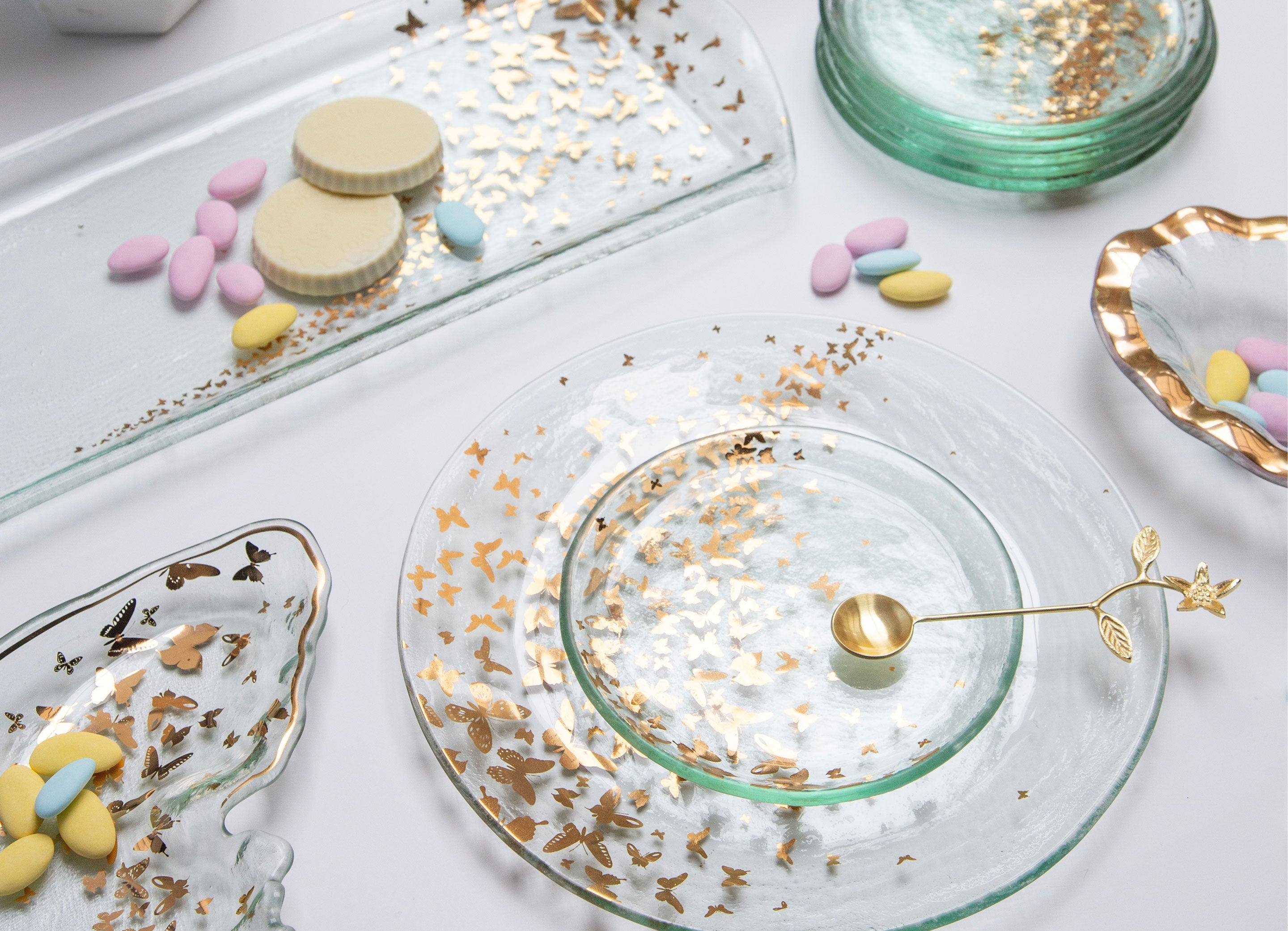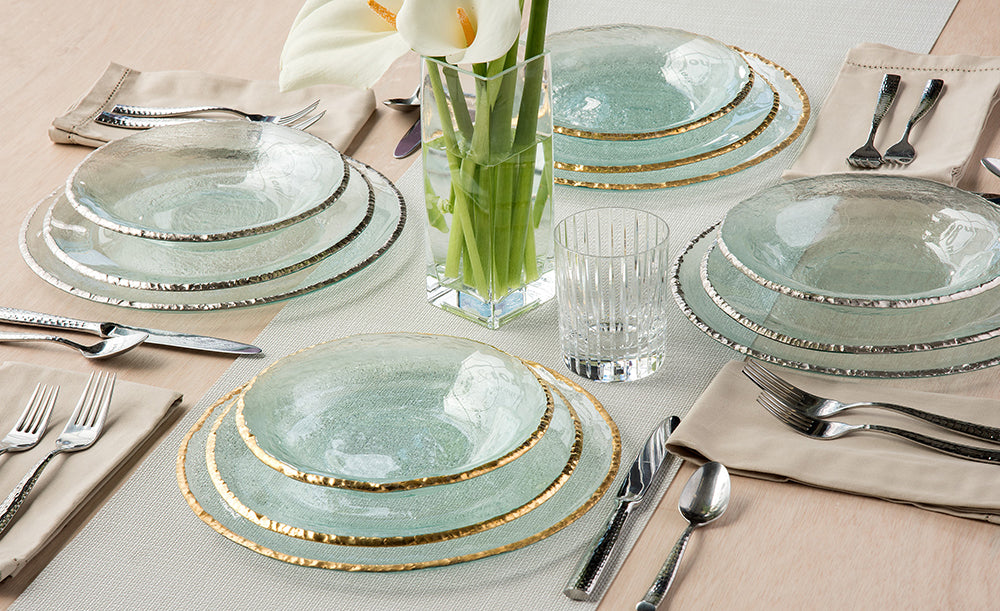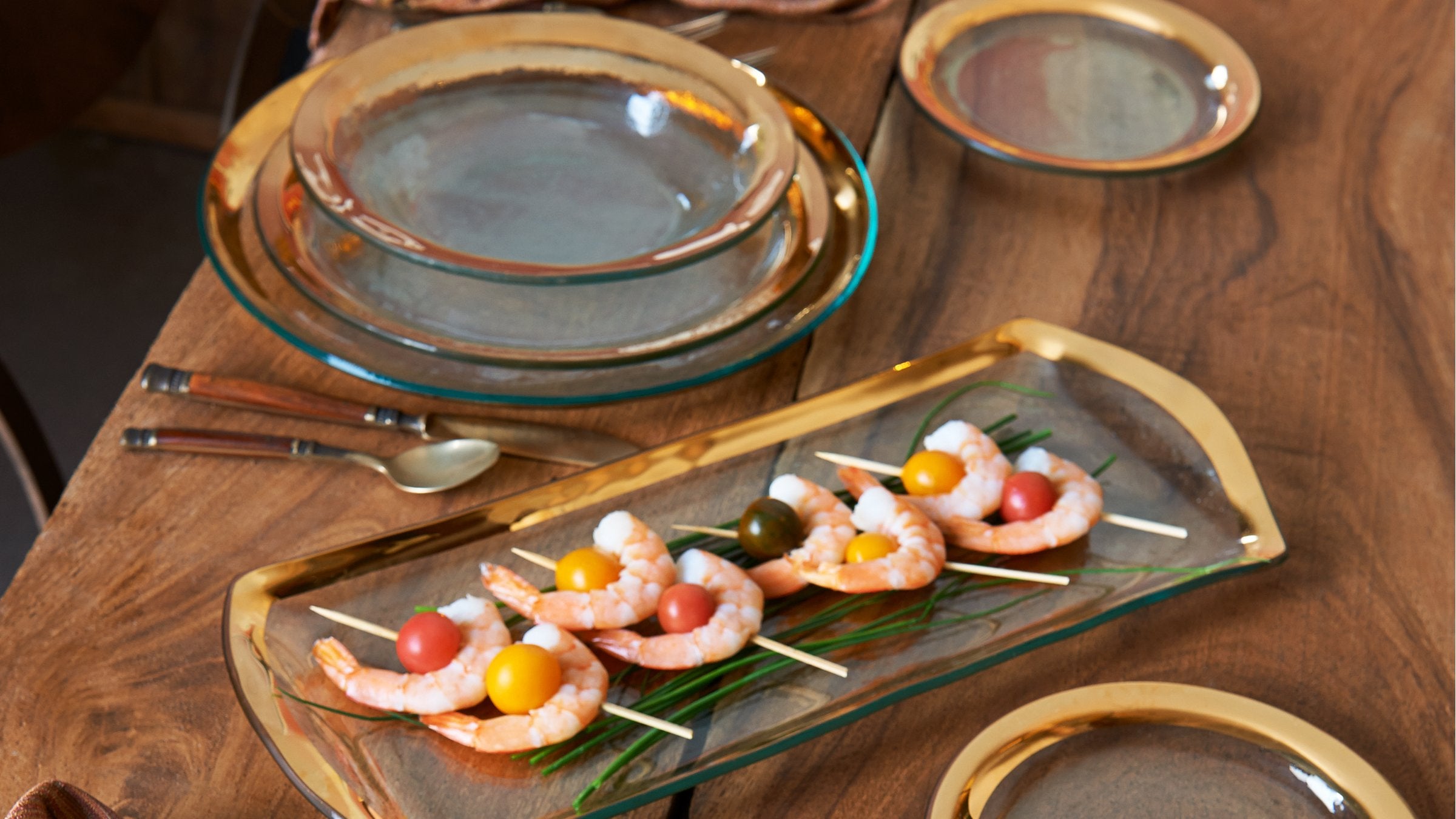Sustainability
Endlessly inspired by nature, Annie Morhauser became dedicated to environmental responsibility long before “green” became a trend. She participated in the first Earth Day as a teenager in 1970, and eco-sourcing, recycling, reusing and zero-waste goals have been standards for this atelier-turned-production-studio since opening in 1983.
Annieglass is produced by a talented team of artisans and master craftspeople along the National Marine Sanctuary of the Monterey Bay in Northern California. The spectacular natural beauty of the area serves as a daily reminder to keep it this way for generations to come through thoughtful stewardship of our production studio and its processes.
A novel compilation of thoughtful sustainability measures are taken throughout the handcrafted, glassmaking process at Annieglass. The warehouse uses an abundant amount of skylights and low wattage energy-efficient lighting, and a special reflective roof keeps the space well insulated. The glass-cleaning machine circulates and reuses water and glass is cleaned with non-toxic vinegar. Creative kiln-firing times ensure energy efficiency during the trademark “slumping” of glass. Earth-friendly, biodegradable packing materials made of sorghum and potato starch deliver the final luxury product to customers.
Text
Elements Upcycling in Action
Whenever possible, scrap glass is remelted into the Elements collection of trivets and trays. The watery green color and ghostlike effect of the many melted pieces of glass fusing together has made this collection a favorite of all generations. Annie’s creative approach to reuse is so unique that it is awaiting a design patent. By reusing scrap glass, the studio is able to avoid using landfills
Annie and her team of artisans have re-invigorated the ancient art of glassmaking utilizing the latest in technology and materials. Waterjet cutting permits formerly impossible shapes to be cut out of thick blocks of glass. Old world painting skills and the fingerprints of the artisans personalize each mold.
Biodegradable Packing
Earth-friendly, biodegradable packing materials made of sorghum and potato starch deliver the final luxury product to customers. Traditional loose filling peanuts are made from Styrofoam. After disposal, they can end up in a landfill or floating around the ocean for many, many years - experts guess around 400 yrs. Currently our oceans carry about 578,000 tons of plastic, here are some facts about oceanic plastic pollutions.BTW, they safe enough to eat - just not very tasty.





